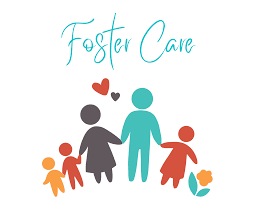The foster care crisis in the United States is a growing concern, affecting hundreds of thousands of children and families every year. This crisis, driven by a variety of socio-economic, legal, and systemic factors, leaves vulnerable children in unstable living situations and places a massive strain on the foster care system. Understanding the root causes of this issue and exploring practical solutions can help drive much-needed reform. Moreover, at Child Protection Services, we recognize these challenges and are committed to helping address and resolve foster care crises for families in need.
The Current State of the Foster Care Crisis
The U.S. foster care system is overwhelmed by a surge in the number of children entering care, many of whom are subjected to a system that is struggling to keep up with demand. According to recent statistics, there are over 400,000 children in foster care at any given time. This number has grown steadily over the past few decades due to various social and economic factors, and the system is becoming increasingly unable to provide the support these children need.
The shortage of foster families willing and able to take in children has exacerbated the crisis, leaving many children in temporary placements for long periods or being placed in group homes where the environment may not be ideal for healthy development. Furthermore, social workers and child welfare professionals are often overworked and under-resourced, contributing to a system that fails to adequately address the needs of foster children.
At Child Protection Services, we understand how critical it is for children to have a stable, nurturing environment during these formative years. We work tirelessly to advocate for improvements in the system while providing resources to help families navigate the challenges they face within the foster care process.
Causes of the Foster Care Crisis
The root causes of the foster care crisis are complex and multifaceted. Below are some of the main contributing factors:
- Substance Abuse
One of the primary drivers of children entering the foster care system is parental substance abuse. The opioid epidemic, in particular, has led to a surge in the number of children being removed from homes where drug addiction makes it unsafe for them to remain. Substance abuse often leads to neglect or abuse, resulting in intervention by child protective services. This issue is prevalent across the United States and requires comprehensive solutions that address not only the needs of children but also the rehabilitation of parents. - Mental Health Issues
Parental mental health problems can also play a significant role in foster care placements. Parents who suffer from untreated mental illnesses may struggle to care for their children, leading to neglect or dangerous home environments. Unfortunately, mental health services in the U.S. are often expensive or difficult to access, leaving many families without the support they need. - Poverty and Economic Hardship
Poverty remains a major factor contributing to the foster care crisis. Families living in extreme poverty may lack access to basic necessities such as food, housing, and medical care, which can lead to neglect or unsafe living conditions. Although poverty alone is not grounds for removing a child from a home, it can exacerbate other issues such as substance abuse and mental health challenges. - Inadequate Support for Biological Families
The foster care system in the U.S. tends to prioritize removing children from unsafe homes rather than focusing on providing support to keep families intact. Many parents who struggle with addiction, mental health issues, or poverty are not given the resources they need to rehabilitate and regain custody of their children. This approach often leads to lengthy stays in foster care, and the cycle of instability continues.
At Child Protection Services, we recognize that many families facing these challenges need compassionate, comprehensive support. Our services aim to provide assistance that keeps families together when possible, offering resources to help parents overcome personal difficulties and create a safer environment for their children.
Solutions to the Foster Care Crisis
While the foster care crisis may seem overwhelming, there are a number of potential solutions that could help alleviate the strain on the system and ensure that every child in care is given the opportunity to thrive.
- Prevention and Family Preservation Programs
One of the most effective ways to reduce the number of children entering foster care is through prevention programs aimed at helping at-risk families before a crisis occurs. This includes providing services such as family counseling, substance abuse treatment, and financial assistance to struggling families. Keeping families intact when it is safe to do so should be a priority, and with the right support, many parents can overcome the challenges they face. - Improved Mental Health and Substance Abuse Services
Providing greater access to mental health and substance abuse services for parents can prevent many children from entering the foster care system in the first place. These services should be easily accessible and affordable, ensuring that all families in need receive the help they require. Community-based programs that focus on early intervention can also be critical in preventing family breakdown. - Recruitment and Retention of Foster Families
A key part of resolving the foster care crisis involves recruiting more qualified foster parents and providing them with the support they need to succeed. Many families are hesitant to become foster parents due to concerns about the challenges involved, but with proper training, emotional support, and financial assistance, more families may be willing to take in foster children. Retaining foster parents by providing ongoing resources and guidance is equally important in maintaining stability within the system. - Better Support for Aging Out Youth
Children who age out of the foster care system at 18 face significant challenges, including homelessness, unemployment, and a lack of emotional support. Providing more robust transitional services for aging-out youth can help them build a stable foundation for adulthood. These services might include housing assistance, job training programs, and mental health resources. - Policy Reform
Finally, comprehensive policy reform is essential to address the systemic issues within the foster care system. Policymakers should focus on creating laws that prioritize family preservation, increase funding for prevention programs, and ensure that foster children have access to the best possible care.
At Child Protection Services, we advocate for policy changes that can make a difference in the lives of foster children and families. We work closely with community leaders and organizations to raise awareness and push for reforms that address the core issues of the crisis.
Conclusion
The foster care crisis is a complex and pressing issue that requires immediate attention. With the right combination of preventative services, mental health and substance abuse treatment, support for foster families, and policy reform, the system can be improved to better serve the needs of vulnerable children. At Child Protection Services, we are committed to being a part of the solution by providing essential resources, advocacy, and support for those affected by the foster care system.
If you or someone you know is facing challenges related to foster care, we encourage you to reach out to us. Our team is here to help navigate the system and find solutions that work for every family. Together, we can work to resolve the foster care crisis and ensure a brighter future for every child.




